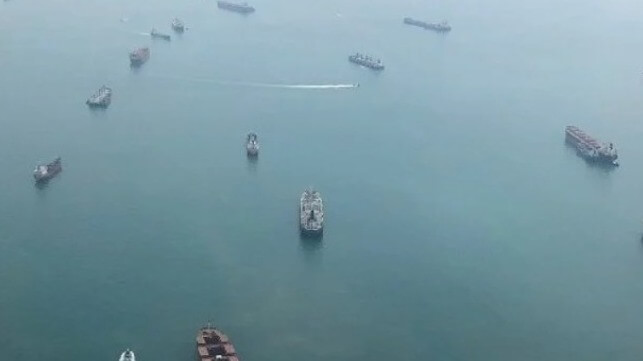Singapore Strait is an "Area of Concern" While Global Piracy Declines

While globally the incidents of piracy against commercial shipping continue to decline, Asia and specifically the Singapore Strait continues to be one of the areas of greater concern. The ReCAAP Information Sharing Center (ISC) released its mid-year report for 2022 highlighting an 11 percent increase in incidents in Asia while also conducting a dialogue session with the shipping industry to discuss steps required to reduce the regional risks.
ReCAAP’s mid-year report reflects the same issues identified by the ICC International Maritime Bureau (IMB) which recently said that it received the lowest number of reported incidents for the first half of any year since 1994. While saying that incidents were nearing a 30-year low, they also pointed to the increase of low-level crimes in the Singapore Strait.
ReCAAP’s data shows that there was a total of 40 incidents of robbery against ships in Asia in the first half of 2022, which is up by 11 compared to the 38 reported incidents in 2021. More than half of those incidents were reported for ships transiting the Singapore Strait with a total of 27 reports up from 20 last year. “The Singapore Strait,” ReCAAP says, “remains an area of concern.”
A closer analysis of the data shows that the activity is heavily concentrated at the eastern side of the Singapore Strait. Further, 19 of the incidents were in the eastbound traffic lane. Yet, while activity is high, it remains mostly low-level crime with boarders seeking to steal spare parts or other materials most often from open store lockers. Most often the perpetrators leave the vessels when they are discovered and often there is no direct confrontation and interaction between the crew and the boarders.
Across Asia, ReCAAP says three-quarters of the incidents are classified at the lowest level meaning that the perpetrators are not armed and the crew was not harmed. However, nearly three-quarters of the incidents reported were on board ships while they were underway versus anchored or at berth. Only in two of the reports did the vessel report that the attempt at boarding was unsuccessful, but ReCAAP emphasized that reporting is critical to ensure an accurate understanding of the activity in the region.
The only other area that saw an increase in reports was the Chattigram anchorages in Bangladesh, where there were three reports versus none in 2021. There were no reports both in Malaysia and Vietnam and incidents declined by half to just three in the Philippines. Further, it is more than two years since there was a reported abduction of crew for ransom in the Sulu-Celebes Seas and waters off Eastern Sabah. While the last abduction was in January 2020, ReCAAP advises that the threat remains potentially high recommending that vessels continue to re-route where possible.
During the discussion with the shipping industry, they highlighted the need to focus on the conduct of the crew while transiting these areas. The participants agreed on the need for the shipping industry to continually review the Risk Assessment Plan, implement the Ship Security Plan among other time-tested best management measures required to suppress the acts of piracy and armed robbery against ships, according to ReCAAP. They recommended that vigilance and lookouts be maximized and that an alarm should be sounded when sighting unauthorized persons on board ships or suspicious boats in the vicinity.
Over the past 15 years, ReCAAP has focused on data analytics on the number of perpetrators, weapons carried, treatment of crew, stolen items, type of ships boarded, and time of the incidents. Phase II of the data analytics is underway and ReCAAP hopes to be able to provide more analytical information that will enable the ship crew to be better prepared for any potential piracy and armed robbery incidents by adopting the relevant safety measures, especially when navigating through the areas of concerns.
